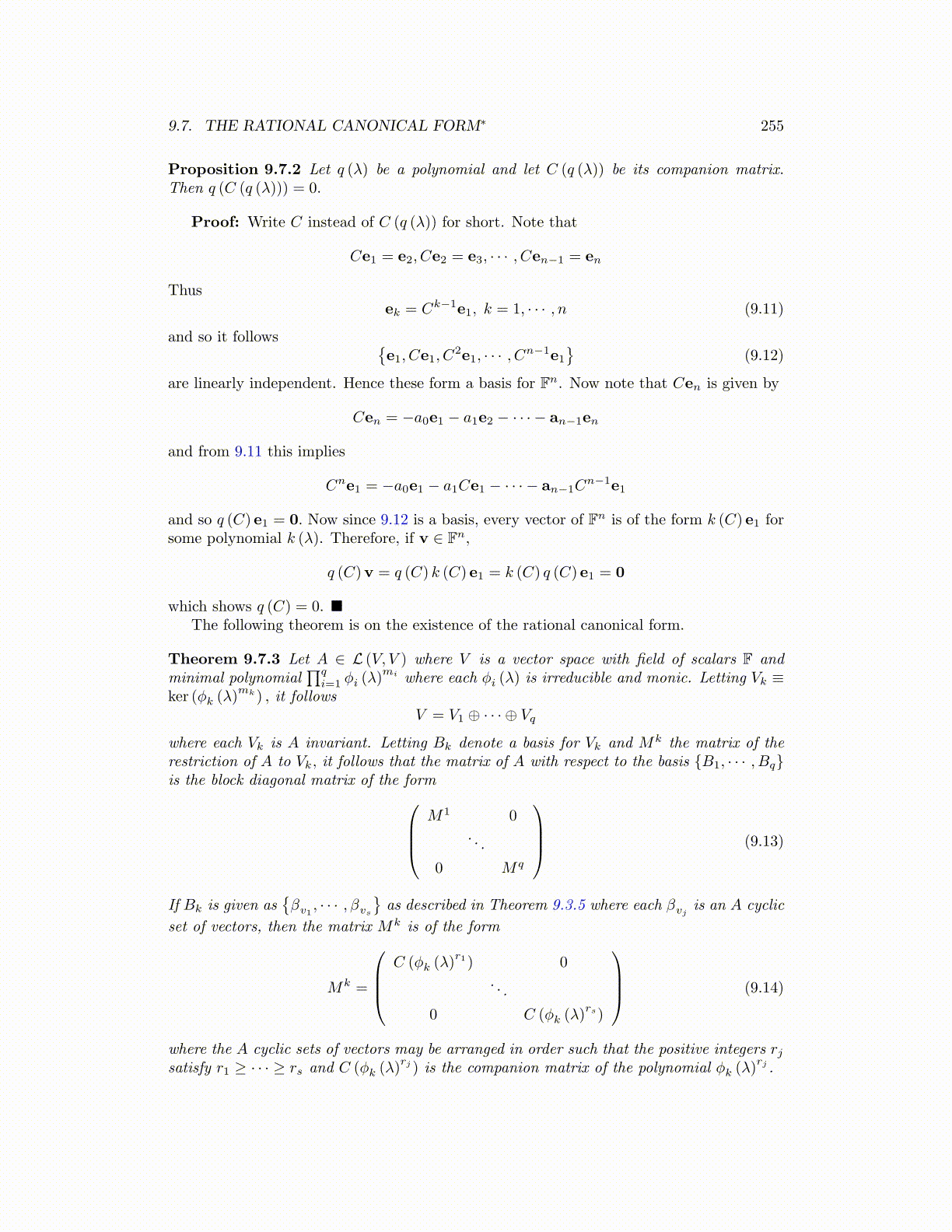
9.7. THE RATIONAL CANONICAL FORM∗ 255
Proposition 9.7.2 Let q (λ) be a polynomial and let C (q (λ)) be its companion matrix.Then q (C (q (λ))) = 0.
Proof: Write C instead of C (q (λ)) for short. Note that
Ce1 = e2, Ce2 = e3, · · · , Cen−1 = en
Thusek = Ck−1e1, k = 1, · · · , n (9.11)
and so it follows {e1, Ce1, C
2e1, · · · , Cn−1e1}
(9.12)
are linearly independent. Hence these form a basis for Fn. Now note that Cen is given by
Cen = −a0e1 − a1e2 − · · · − an−1en
and from 9.11 this implies
Cne1 = −a0e1 − a1Ce1 − · · · − an−1Cn−1e1
and so q (C) e1 = 0. Now since 9.12 is a basis, every vector of Fn is of the form k (C) e1 forsome polynomial k (λ). Therefore, if v ∈ Fn,
q (C)v = q (C) k (C) e1 = k (C) q (C) e1 = 0
which shows q (C) = 0. ■The following theorem is on the existence of the rational canonical form.
Theorem 9.7.3 Let A ∈ L (V, V ) where V is a vector space with field of scalars F andminimal polynomial
∏qi=1 ϕi (λ)
mi where each ϕi (λ) is irreducible and monic. Letting Vk ≡ker (ϕk (λ)
mk) , it followsV = V1 ⊕ · · · ⊕ Vq
where each Vk is A invariant. Letting Bk denote a basis for Vk and Mk the matrix of therestriction of A to Vk, it follows that the matrix of A with respect to the basis {B1, · · · , Bq}is the block diagonal matrix of the form
M1 0. . .
0 Mq
(9.13)
If Bk is given as{βv1 , · · · , βvs
}as described in Theorem 9.3.5 where each βvj is an A cyclic
set of vectors, then the matrix Mk is of the form
Mk =
C (ϕk (λ)
r1) 0. . .
0 C (ϕk (λ)rs)
(9.14)
where the A cyclic sets of vectors may be arranged in order such that the positive integers rjsatisfy r1 ≥ · · · ≥ rs and C (ϕk (λ)
rj ) is the companion matrix of the polynomial ϕk (λ)rj .